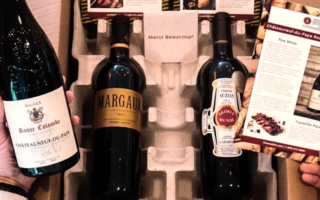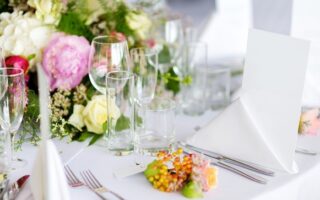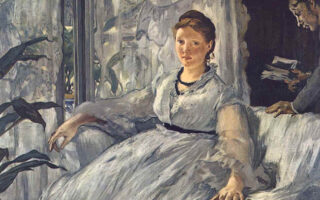How To Visit A Wine Chateaux
325
Gloomy January is an excellent time to start planning enjoyable trips. That is particularly true in the case of visiting wine chateaux. Why plan such a visit? Perhaps you’ve enjoyed some fine wines over the Christmas holidays, and were curious to see where the grapes were grown. Or, a friend has suggested a new wine that you might enjoy, and your curiosity has been aroused. Or, you may be intrigued by the idea of starting your own wine cellar, or perhaps buying wines less expensively as futures contracts rather than waiting for the bottles to appear at their full retail price in a year or so at your local dealer.
Why January? For one thing, if you live in the United States, check the discounted airline ticket prices to Paris that are available now, for flights through the end of March. Now is the right time to plan your trip, to arrive at precisely the time when wine chateaux assess the previous year’s vintage, and put together their wines. This assemblage towards the middle of March exhibits the winemaker’s skills, as he or she juggles proportions of different wines to be used in the final blended wine. Because of this, wine writers begin to descend on the celebrated estates of Burgundy, Bordeaux, and other areas of France, assessing the new vintage.
There is no reason why you could not do the same thing, and while you are at it, form your own evaluation of the fine wines that you will taste. If you are fortunate, buying a case or two of a fine wine at a futures price before delivery, based on your on site research, will cover a good proportion of the expenses of your trip.
Where to start? The first thing to do is to map out your itinerary. Although many chateau owners will welcome visitors unannounced, not all do so, and you should therefore make your arrangements for the visit in advance, either by email or snail mail. For Burgundy, my Bonjour Paris series last year on Burgundy lists wine chateaux in each region to visit. For Bordeaux, many of the celebrated properties now have their own websites, where contact may be made. Or, send for the helpful Decouverte Guide, which lists in English all wine chateaux of the Medoc, with contact addresses, and hotels and restaurants of the region. It is available free from the Conseil des Vins du Medoc, 1 cours du XXX Juillet, 33000 Bordeaux, France. Or if you prefer to be guided, check out the tours run by the Bordeaux municipality through its celebrated wine regions. Their website is at www.bordeaux-tourisme.com. When you make contact, specify the date and times preferred, whether English or French should be used, and how many will be in your party. Of course, you will also want to taste the wine, both the current vintage, and a previous one if possible, for reference and contrast. How many chateaux should you visit? It would be tempting to visit as many as physically possible, but at a certain point, the chateaux (and their wines) would then all sort of blend together. Best to visit two or three in a day, with some regional variety. You could, for example, spend an enjoyable three days in the Medoc visiting each region, with a different wine chateau each morning and afternoon. Then you would be comparing distinctive wines from the same vintage, a nice contrast that you will long remember when your trip is over. Visiting a wine chateau is your opportunity to deepen your appreciation of wine, in more ways than one. Try to engage the winemaker in conversation about his creation. You will probably find him or her pleased to share his knowledge, and his opinions, often quite forcefully expressed, about winemaking. Here are some questions to start:
–What wines do you make (and why not different ones)?–What proportions do you use of the different grape varieties in your wine?
These questions will let the winemaker tell you about what grows well at this property, and what does not. Possibly in the past they have experimented with some grape varieties which did not fare well. The winemaker may comment that different areas produce the same grape variety unequally, as the merlot grape in the Medoc is a softer varietal than the same grape grown in Pomerol. That of course affects the blend as well.
With some idea of what works well at this wine chateau, deepen your knowledge by asking about the property itself.
–What is an ideal growing season like here? What was last season like? Were there special problems harvesting the 2003 vintage? What was the 2000 season like?–What is your best growing property, its exposure and subsoil?
These questions will begin to get to the materials that the winemaker works with, soil and climate. The question about the 2000 vintage, for much of the Bordeax region, is a sort of control question, for generally speaking, the growing season was excellent in all regions. For 2003, much heralded during the summer, you may have a different answer. That summer set record heat levels, and harvesting was at an unprecedented early date for most properties. Many may have had problems even finding picking crews, while their grapes shrivelled on their vines. You will probably also find that through long experience, winemakers have dedicated certain areas to different grape varieties. Ask them why. The answer may tell you why, neighboring a world famous wine estate, one sometimes finds a field of sorry looking corn instead of more grapevines.
Then, on to the wine itself. Here are a few questions to get you started:
–What percentage of your grapes do you declassify?–How do you ferment your wines, in oak or steel casks?–When do you drink your wine, in bottle or magnum?
A self-respecting wine chateau watches its annual vintage very carefully, and only reserves the proven best wines for its grand vin. The…
- SUBSCRIBE
- ALREADY SUBSCRIBED?
BECOME A BONJOUR PARIS MEMBER
Gain full access to our collection of over 5,000 articles and bring the City of Light into your life. Just 60 USD per year.
Find out why you should become a member here.
Sign in
Fill in your credentials below.
Gloomy January is an excellent time to start planning enjoyable trips. That is particularly true in the case of visiting wine chateaux. Why plan such a visit? Perhaps you’ve enjoyed some fine wines over the Christmas holidays, and were curious to see where the grapes were grown. Or, a friend has suggested a new wine that you might enjoy, and your curiosity has been aroused. Or, you may be intrigued by the idea of starting your own wine cellar, or perhaps buying wines less expensively as futures contracts rather than waiting for the bottles to appear at their full retail price in a year or so at your local dealer.
Why January? For one thing, if you live in the United States, check the discounted airline ticket prices to Paris that are available now, for flights through the end of March. Now is the right time to plan your trip, to arrive at precisely the time when wine chateaux assess the previous year’s vintage, and put together their wines. This assemblage towards the middle of March exhibits the winemaker’s skills, as he or she juggles proportions of different wines to be used in the final blended wine. Because of this, wine writers begin to descend on the celebrated estates of Burgundy, Bordeaux, and other areas of France, assessing the new vintage.
There is no reason why you could not do the same thing, and while you are at it, form your own evaluation of the fine wines that you will taste. If you are fortunate, buying a case or two of a fine wine at a futures price before delivery, based on your on site research, will cover a good proportion of the expenses of your trip.
Where to start? The first thing to do is to map out your itinerary. Although many chateau owners will welcome visitors unannounced, not all do so, and you should therefore make your arrangements for the visit in advance, either by email or snail mail. For Burgundy, my Bonjour Paris series last year on Burgundy lists wine chateaux in each region to visit. For Bordeaux, many of the celebrated properties now have their own websites, where contact may be made. Or, send for the helpful Decouverte Guide, which lists in English all wine chateaux of the Medoc, with contact addresses, and hotels and restaurants of the region. It is available free from the Conseil des Vins du Medoc, 1 cours du XXX Juillet, 33000 Bordeaux, France. Or if you prefer to be guided, check out the tours run by the Bordeaux municipality through its celebrated wine regions. Their website is at www.bordeaux-tourisme.com.
When you make contact, specify the date and times preferred, whether English or French should be used, and how many will be in your party. Of course, you will also want to taste the wine, both the current vintage, and a previous one if possible, for reference and contrast. How many chateaux should you visit? It would be tempting to visit as many as physically possible, but at a certain point, the chateaux (and their wines) would then all sort of blend together. Best to visit two or three in a day, with some regional variety. You could, for example, spend an enjoyable three days in the Medoc visiting each region, with a different wine chateau each morning and afternoon. Then you would be comparing distinctive wines from the same vintage, a nice contrast that you will long remember when your trip is over.
Visiting a wine chateau is your opportunity to deepen your appreciation of wine, in more ways than one. Try to engage the winemaker in conversation about his creation. You will probably find him or her pleased to share his knowledge, and his opinions, often quite forcefully expressed, about winemaking. Here are some questions to start:
–What wines do you make (and why not different ones)?
–What proportions do you use of the different grape varieties in your wine?
–What proportions do you use of the different grape varieties in your wine?
These questions will let the winemaker tell you about what grows well at this property, and what does not. Possibly in the past they have experimented with some grape varieties which did not fare well. The winemaker may comment that different areas produce the same grape variety unequally, as the merlot grape in the Medoc is a softer varietal than the same grape grown in Pomerol. That of course affects the blend as well.
With some idea of what works well at this wine chateau, deepen your knowledge by asking about the property itself.
–What is an ideal growing season like here? What was last season like? Were there special problems harvesting the 2003 vintage? What was the 2000 season like?
–What is your best growing property, its exposure and subsoil?
–What is your best growing property, its exposure and subsoil?
These questions will begin to get to the materials that the winemaker works with, soil and climate. The question about the 2000 vintage, for much of the Bordeax region, is a sort of control question, for generally speaking, the growing season was excellent in all regions. For 2003, much heralded during the summer, you may have a different answer. That summer set record heat levels, and harvesting was at an unprecedented early date for most properties. Many may have had problems even finding picking crews, while their grapes shrivelled on their vines. You will probably also find that through long experience, winemakers have dedicated certain areas to different grape varieties. Ask them why. The answer may tell you why, neighboring a world famous wine estate, one sometimes finds a field of sorry looking corn instead of more grapevines.
Then, on to the wine itself. Here are a few questions to get you started:
–What percentage of your grapes do you declassify?
–How do you ferment your wines, in oak or steel casks?
–When do you drink your wine, in bottle or magnum?
–How do you ferment your wines, in oak or steel casks?
–When do you drink your wine, in bottle or magnum?
A self-respecting wine chateau watches its annual vintage very carefully, and only reserves the proven best wines for its grand vin. The rest, because it comes from vines that are too young, or because it does not meet exacting standards, is declassified as a second wine (often an excellent value, sold for a fraction of the price of the grand vin) or sold as generic or communal wine. The very best wine chateaux have been known to declassify their entire vintage, if it did not meet their exacting standards, taking a considerable monetary loss to safeguard their reputations.
The question regarding fermentation and cask aging can get you into a revealing conversation about the winemaker’s guiding philosophy about his wine. Is good structure for the wine desirable, with the wine’s flavor best brought out by long cask aging? If so, then not only wooden casks, but the proportion of new ones used, would be of interest. Often these wines, since tannins are produced by such aging, are meant to be kept a very long time before the tannins soften, and combine well with the underlying fruit of the grapes. In the region of Chablis, the longstanding dispute over fermentation in casks or stainless steel goes to the heart of differing philosophies about winemaking, passionately felt and delivered with conviction.
I always like to ask a winemaker when his wine is at its best, and the answer is always variable, according to the vintage, and the bottle size (with magnums aging more slowly). The time that it takes a particular vintage to mature, and reach its plateau of excellence, will vary with the vintage. You may well find that some more recent vintages are best enjoyed before other ones that are earlier. Finding out just why that is so is great fun, and adds to your wine drinking pleasure.
Why not let this be the year that you visit a wine chateau or two? You will deepen your appreciation for fine wines, and begin to take charge of your own wine buying as your preferences develop, with solid reasons behind them. And there is always a wonderful sense of occasion behind visiting a wine chateau. You will long remember entering those chateau gates into the winemaker’s world, then of course your visit, the tasting, and the inside information that the winemaker was glad to share with you. You will only wonder why it took so long to make your first visit to the region of wine chateaux.
—
Bill Shepard is Bonjour Paris’s wine editor, and the author of Shepard’s Guide to Mastering French Wines: Taste Is for Wine: Points Are for Ping Pong.
Bill Shepard is Bonjour Paris’s wine editor, and the author of Shepard’s Guide to Mastering French Wines: Taste Is for Wine: Points Are for Ping Pong.


